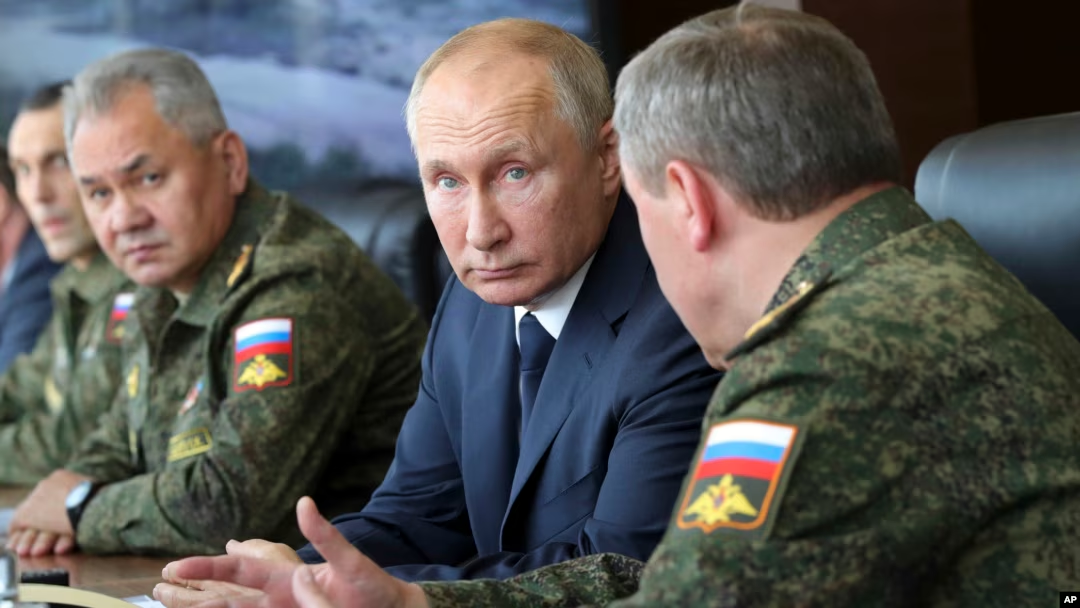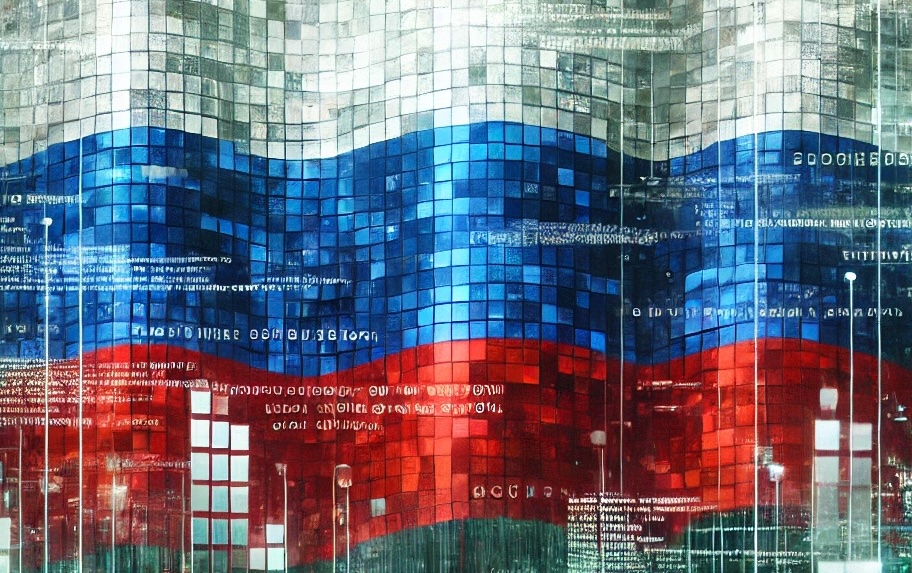Already a subscriber? Make sure to log into your account before viewing this content. You can access your account by hitting the “login” button on the top right corner. Still unable to see the content after signing in? Make sure your card on file is up-to-date.
The United States Intelligence Community’s annual threat assessment reveals that despite heavy losses in Ukraine, Russia holds the “upper hand” and continues to pose a threat to US national security.
Some shit you should know before you read: If you’re unaware, the US intelligence community releases an Annual Threat Assessment (ATA) each year to provide Congress and the public with an unclassified overview of the most pressing national security threats facing the country. Created by the Office of the Director of National Intelligence (ODNI), the report draws on insights from all 18 US intelligence agencies and is typically released ahead of congressional testimony by intelligence leaders. In last year’s assessment, China, Russia, Iran, and North Korea were highlighted as the top four nation-state threats, citing China’s global influence and technological ambitions, Russia’s aggression in Ukraine and cyber operations, Iran’s regional destabilization efforts, and North Korea’s advancing missile program. The 2024 report also warned of transnational issues such as climate change, pandemics, and the destabilizing effects of misinformation and emerging technologies.

Getting into it: In the 2025 Annual Threat Assessment, the US intelligence community describes Russia as an increasingly aggressive and resilient adversary, warning that “Russia’s geopolitical, economic, military, and domestic political trends underscore its enduring potential threat to U.S. power, presence, and global interests.” The report states that despite heavy losses in Ukraine, Moscow has adapted and reinforced its war effort through expanded support from China, Iran, and North Korea. Intelligence officials note that Russia “possesses long-range precision strike capability… that can hold the Homeland at risk,” including cruise missile-equipped submarines and bombers.
Russia is also leveraging lessons learned in Ukraine, particularly in electronic warfare and drone operations, which it may share with other US adversaries. According to the report, “this experience probably will challenge future US defense planning.”
The assessment also points to Russia’s use of asymmetric tools—including cyberattacks, disinformation, and gray zone operations—to compete below the level of a direct conflict. Intelligence officials warn that Russia “has gained real-world experience integrating cyber attacks with wartime military action,” strengthening its ability to disrupt critical infrastructure and sow instability in the United States if a war was to ever break out.

RE China/Russia relations — The report highlights that Russia’s relationship with China has grown significantly deeper, helping it circumvent Western sanctions, maintain energy exports, and fuel its war in Ukraine. The report claims that Russia is becoming more reliant on China and other BRICS countries to mitigate the effects of global isolation. However, the intelligence community warns that “Russia is also increasing military cooperation with Iran and North Korea,” which has allowed it to import artillery shells, drones, and other munitions in defiance of international controls.
RE Ukraine — In Ukraine, the intel community believes that Russia has seized the upper hand, noting that Moscow now holds “momentum as a grinding war of attrition plays to Russia’s military advantages.” While President Putin may not achieve his original goal of fully subjugating Ukraine, the report suggests he is willing to accept a long, costly war that erodes Ukraine’s strength and weakens Western resolve. The assessment notes that “Russia retains a firepower advantage” thanks to increased defense spending and industrial output, and that Moscow has been able to replenish its forces and sustain multi-front operations despite battlefield losses.
RE Industrial base — The report warns that Moscow’s defense-industrial base is expanding, allowing it to sustain its war in Ukraine and continue developing advanced weapons systems that threaten US forces and allies.
RE Space — The report claims that Russia continues to advance its counterspace capabilities, fielding new antisatellite weapons and electronic warfare systems to degrade US satellite communications and surveillance in a crisis. The report also confirms that Russia is developing a new satellite-based antisatellite system designed to carry a nuclear payload—an unprecedented and dangerous escalation that would threaten “all countries’ national security and commercial satellites.” While sanctions have degraded parts of its space sector, Moscow continues to prioritize capabilities critical to national security and has warned that foreign commercial satellites supporting military efforts could become “legitimate targets.”
RE Influence Operations — Moscow’s influence operations continue to be a major concern. The report states that Russia is likely to increase its efforts to stoke domestic divisions in the US, sow doubt in elections, and amplify Kremlin-favored narratives, particularly around the war in Ukraine. Russia employs a range of covert organizations, state-run media, and AI-generated content to manipulate public opinion and undermine trust in democratic institutions. “Moscow probably believes information operations efforts to influence U.S. elections are advantageous regardless of whether they affect election outcomes,” the report warns.
RE Arctic — In the Arctic, Russia is positioning itself to control key trade routes and extract resources. Though its military ambitions in the region have been constrained by the Ukraine war, Russia has welcomed greater Chinese involvement and remains committed to securing strategic influence in the High North.
The Kremlin has not issued a formal statement responding to the 2025 Threat Assessment, but Russian state media have dismissed similar past reports as “anti-Russian propaganda” designed to justify NATO expansion and Western military aid to Ukraine. Russian officials have long portrayed the United States as the true aggressor, accusing Washington of instigating the conflict in Ukraine and interfering in Russia’s internal affairs.
Putin has consistently described the war as a necessary defense against Western encroachment and an existential struggle for Russia’s sovereignty.






